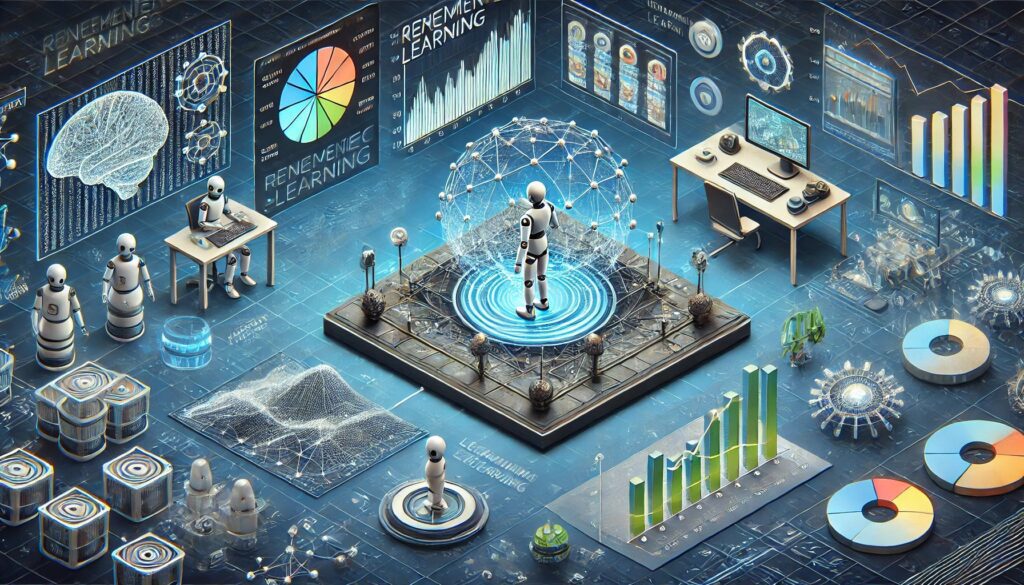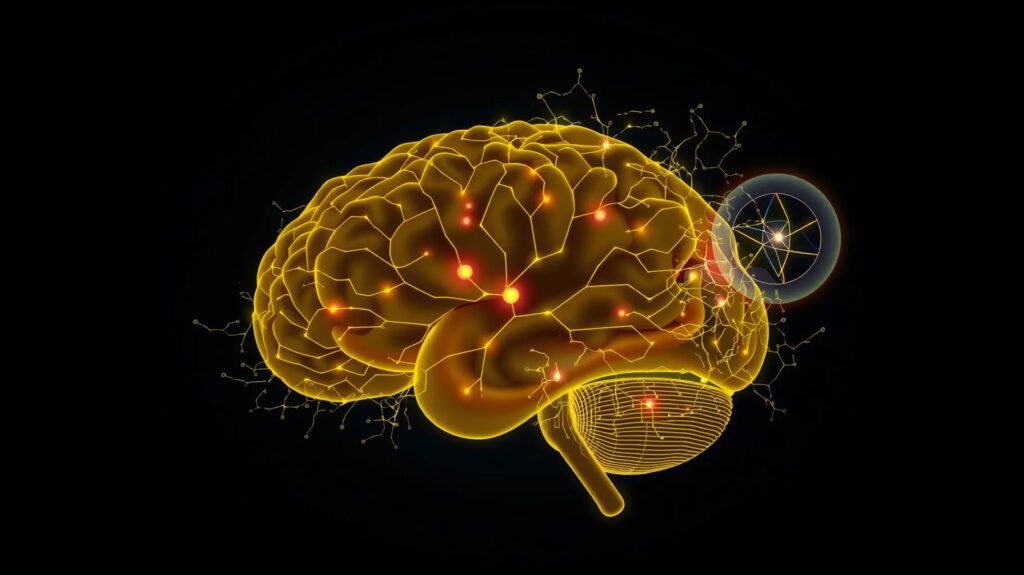
In the world of artificial intelligence and machine learning, Reinforcement Learning (RL) stands out as a beacon of innovation. This cutting-edge technology is revolutionizing industries, pushing boundaries, and creating solutions that were once deemed impossible.
Let’s dive into the fascinating realm of Reinforcement Learning, exploring its fundamentals, applications, and future potential.
What is Reinforcement Learning?
Reinforcement Learning is a type of machine learning where an agent learns to make decisions by performing actions and receiving rewards or penalties. Unlike supervised learning, where the model is trained on a fixed dataset, RL involves continuous interaction with the environment. The goal is to maximize cumulative rewards through trial and error.
In RL, the agent is analogous to a child learning to walk. Just like a child receives feedback from their environment (praise for taking steps or falling down and learning to avoid obstacles), the RL agent receives feedback in the form of rewards and penalties, shaping its behavior over time.
The Core Components of RL
At its core, RL consists of four main components:
- Agent: The learner or decision-maker.
- Environment: The external system with which the agent interacts.
- Actions: The choices the agent can make.
- Rewards: Feedback from the environment to evaluate actions.
These components work together in a loop, constantly refining the agent’s strategies to achieve the best possible outcomes. The agent observes the state of the environment, takes an action, and receives a reward, which it uses to update its strategy. This loop continues until the agent’s performance is optimized.
How Does Reinforcement Learning Work?
In an RL setup, the agent starts with no knowledge of the environment. Through exploration and exploitation, the agent tests various actions and observes the results. Over time, it learns the most effective strategies. This process can be modeled using algorithms like Q-learning and Deep Q Networks (DQNs).
Q-learning is a value-based method where the agent learns a value function that indicates the quality of each action in each state. This value function, known as the Q-function, helps the agent choose the best actions to maximize its cumulative rewards.
Deep Q Networks (DQNs) extend Q-learning by using neural networks to approximate the Q-values. This approach allows RL agents to handle more complex environments with high-dimensional state spaces, such as video games or robotic control tasks.
Real-World Applications of Reinforcement Learning
Reinforcement Learning is not just a theoretical concept; it has numerous real-world applications:
- Robotics: Robots learn to perform tasks like walking, grasping, and flying through RL. For instance, Boston Dynamics’ robots use RL to navigate and perform complex maneuvers.
- Gaming: AI agents powered by RL have mastered games like Go, chess, and video games, often surpassing human performance. AlphaGo, developed by DeepMind, famously defeated the world champion Go player, showcasing RL’s potential.
- Finance: RL is used for portfolio management, trading strategies, and risk management. Algorithms can adapt to changing market conditions, optimizing financial decisions.
- Healthcare: From personalized treatment plans to robotic surgeries, RL is making significant strides. For example, RL can optimize chemotherapy dosing schedules to improve patient outcomes.
- Autonomous Vehicles: RL algorithms help self-driving cars navigate complex environments safely. Companies like Waymo and Tesla leverage RL to enhance their autonomous driving capabilities.
The Future of Reinforcement Learning
The future of Reinforcement Learning is incredibly promising. With advancements in computational power and data availability, RL is set to solve even more complex problems. Researchers are exploring ways to make RL more efficient, scalable, and interpretable.
One exciting development is meta-learning, where agents learn to learn. This means they can adapt to new tasks more quickly, making them more versatile and practical for real-world applications. Meta-learning enables RL agents to transfer knowledge from one task to another, reducing the time and data required for training.
Another emerging area is multi-agent reinforcement learning (MARL), where multiple agents interact within the same environment. MARL can be applied to collaborative tasks, competitive scenarios, and large-scale systems like traffic management and smart grids.
Challenges and Limitations
Despite its potential, RL faces several challenges:
- Data Efficiency: RL requires large amounts of data to learn effectively, which can be resource-intensive. Researchers are working on techniques like transfer learning and model-based RL to address this issue.
- Exploration vs. Exploitation: Balancing the need to explore new strategies and exploiting known ones remains a critical issue. Too much exploration can be costly, while too little can lead to suboptimal performance.
- Sparse Rewards: In many environments, rewards are infrequent, making learning slower and more difficult. Techniques like reward shaping and hierarchical RL aim to mitigate this challenge.
Ethical Considerations and Safety
As with any powerful technology, the development and deployment of Reinforcement Learning come with ethical considerations and safety concerns. Ensuring that RL agents behave safely and ethically is paramount, especially in high-stakes applications like healthcare and autonomous driving.
Researchers are exploring methods for safe RL, which involves designing algorithms that can learn optimal behaviors while respecting safety constraints. Additionally, transparency and interpretability are crucial for gaining trust in RL systems, making it easier to understand and predict their actions.
Conclusion
Reinforcement Learning is a transformative technology that is reshaping our world. From robotics to finance, its applications are vast and varied. As we continue to push the boundaries of what RL can achieve, we are paving the way for a future where intelligent agents can solve some of the most complex challenges facing humanity.
Frequently Asked Questions about Reinforcement Learning
Q: What is the difference between Reinforcement Learning and supervised learning?
A: In supervised learning, the model is trained on a labeled dataset, meaning it learns from examples with known outcomes. In contrast, Reinforcement Learning involves an agent learning through interaction with an environment, receiving feedback in the form of rewards or penalties. The agent learns to maximize cumulative rewards over time without prior knowledge of the best actions.
Q: How does an RL agent explore its environment?
A: An RL agent explores its environment through a balance of exploration and exploitation. Exploration involves trying new actions to discover their effects, while exploitation uses known information to maximize rewards. Techniques like epsilon-greedy strategies and softmax action selection help manage this balance.
Q: What are some common algorithms used in Reinforcement Learning?
A: Some common RL algorithms include:
- Q-learning: A value-based method that learns the quality of actions in each state.
- Deep Q Networks (DQNs): Use neural networks to approximate Q-values for complex environments.
- Policy Gradient Methods: Directly optimize the policy by adjusting parameters based on the gradient of expected rewards.
- Actor-Critic Methods: Combine value-based and policy-based approaches to improve stability and performance.
Q: What are the key challenges in applying Reinforcement Learning to real-world problems?
A: Key challenges include:
- Data Efficiency: RL often requires large amounts of data to learn effectively.
- Exploration vs. Exploitation: Balancing the need to explore new actions and exploiting known ones.
- Sparse Rewards: Environments where rewards are infrequent can slow learning.
- Scalability: Adapting RL algorithms to large-scale, real-world environments.
Q: How is Reinforcement Learning used in robotics?
A: In robotics, RL is used to teach robots tasks such as walking, grasping objects, and flying. RL algorithms help robots learn from their interactions with the environment, enabling them to adapt to new situations and perform complex tasks autonomously.
Q: Can Reinforcement Learning be used in healthcare?
A: Yes, RL has numerous applications in healthcare, including optimizing treatment plans, robotic surgeries, and personalized medicine. For instance, RL can help determine the most effective chemotherapy dosing schedules to improve patient outcomes.
Q: What is meta-learning in the context of Reinforcement Learning?
A: Meta-learning, or “learning to learn,” involves creating RL agents that can adapt to new tasks more quickly. This approach enables agents to transfer knowledge from previous experiences, reducing the time and data required for training on new tasks.
Q: What are multi-agent reinforcement learning (MARL) systems?
A: MARL involves multiple agents interacting within the same environment. These agents can collaborate, compete, or coexist, making MARL suitable for complex systems like traffic management, smart grids, and cooperative robotics.
Q: What ethical considerations are involved in Reinforcement Learning?
A: Ethical considerations in RL include ensuring safe and ethical behavior of RL agents, particularly in high-stakes applications like healthcare and autonomous driving. Researchers focus on developing safe RL methods, transparency, and interpretability to build trust and ensure ethical deployment.
For more detailed insights, explore these additional resources:





